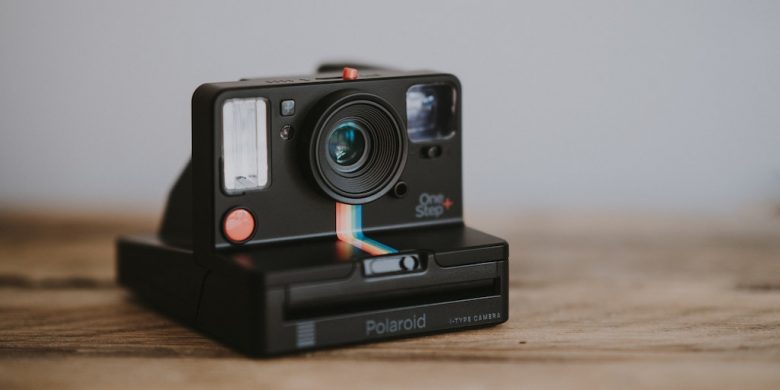
7 Modern Innovations That Totally Changed (Or Will Change) Our Lives

Take control of tomorrow, today.
While it might seem a bit crazy in the world these days, it’s worth remembering that we’re living in one of the most technologically dynamic times in human history. So many of the things that were once considered impossible have become core aspects of our reality in the past century, many of them thanks to universities and the brains that work inside them.
From GPS to the internet, the seatbelt and beyond, we’re tipping our hat to a few life-changing innovations that have come out of the world’s top tertiary institutions.
Polaroids
Before the selfie, there was the Polaroid: instant photo action, a huge novelty back in the late ‘40s when the first camera came to market. Wily Polaroid inventor Edwin Land was a kind of Steve Jobs of his time, a Harvard dropout who routinely snuck into Columbia University’s labs to invent his new tech.
Though no longer in operation, Polaroid’s kitsch and hipster appeal lives on. (Without a Polaroid picture, how else would we ‘shake it’?)
The seatbelt
Where would we be without the seatbelt? The 1960s, probably. While the simple lap-and-sash belt was an optional car safety feature as far back as the 1910s, the first modern three-point belt design was dreamed up by Roger Griswold and Hugh DeHaven at NYC’s Cornell University in 1963, the result of intensive in-house crash injury research. Swedish carmaker Volvo took the reins soon after, perfecting the design, with additional research and design perfection from academics and safety experts at the University of Minnesota.

Image: Aleksey Korchemkin / Shutterstock
The VU Block Model
While our education systems tend to do things the way they’ve always been done, we’ve recently seen big change come about in the form of the VU Block Model: a pioneering approach to study in tertiary degrees.
An Australian first, introduced in 2018 by Victoria University in Melbourne, the core feature of the VU Block Model is that it lets students focus on one unit at a time, rather than cramming four different subjects into the space of a single semester or trimester. So, instead of juggling four different classes with four different academics and four exams at the same time, it focuses on just one in a condensed and focused four-week time frame. With workshop-style seminars, small classes, and a personal, hands-on approach, you get less stress, build deeper connections, and enjoy a pragmatic and engaged approach to learning. All in all, it’s a winning formula for student success.
The internet
Though anchored by US defence technology from the early ‘70s, it was in fact the combined work of a number of universities and faculty research that led to the creation of the modern internet we know today. CERN’s Tim Berners-Lee gets the boss credit for the invention of the World Wide Web, which he delivered to the world in 1989, and – no doubt to his delight – exploded into a vast realm of cat memes and dog vids soon after.
GPS
Thanks to the vision of MIT grad Ivan Getting, alongside colleagues Roger L Easton and Bradford Parkinson, we all benefit today from Global Positioning System (GPS) technology. Engineered from military radar research during the Cold War, GPS became available for civilian use in the ‘80s and quickly became a core feature of our daily lives at the turn of the millennium, turning us all into little blue dots on a Google Map and helping us get from A to B in a cinch.

Image: Brecht Denil / Unsplash
The Ocean Cleanup
In 2013, at the age of 18, Dutch entrepreneur-inventor Boyan Slat gave up his aerospace engineering studies at Delft University of Technology to found The Ocean Cleanup, one of the most impactful and revolutionary inventions of the century. By taking advantage of the ocean’s natural movements, Slat’s ‘passive’ floating cleanup technology was built to clean up the planet’s plastic-infested oceans – all five trillion pieces of the stuff.
Assuming a full-scale rollout, the project hopes to retrieve over 50 percent of the Great Pacific Garbage Patch in just five years. (As a way of further bankrolling the initiative, the group has since developed The Ocean Cleanup sunglasses, novelty specs built from the extracted oceanic refuse.)
Androids
Once a fictional staple of movies like Blade Runner and Terminator 2, androids became a real-life possibility in 2003, when Osaka University’s Intelligent Robotics Lab unleashed the DER 01 Actroid robot, an android capable of high-end human stuff like blinking and talking. Today, we’ve got Tony Robbins chatting with Sofia, the latest AI humanoid darling. It’s probably going to get a lot weirder from here.
This article originally appeared on Junkee.
—
Choose VU, start 2021. Visit Victoria University’s website to learn more about a wide range of courses and VU’s revolutionary Block Model.
—
(Lead image: Annie Spratt / Unsplash)
